Consumer-based 3D scanning might be on a quieter front than it once was in recent years, yet 3D scanning is still going strong for professional uses in industry applications.
The side benefit of introducing 3D scanning at a consumer level is that it familiarized many to the world of 3D scanning who normally wouldn’t get the exposure to this type of technology. It serves as a gateway for startups, small to medium sized companies, and academic institutions to take notice and to implement 3D scanning into their own operations.
3D scanning can help companies gain competitiveness in the marketplace for:
- reverse engineering: developing better products and speed up the design process
- computer-aided inspection: maintain high quality control standards
- reduce costs: improving operational efficiencies and streamlining work processes
- creating an immersive experience: displaying digital 3D models of products for ecommerce or virtual reality
- inspiring innovation: reinventing and redefining traditional methods
Here’s a quick look at some of the trends we’re looking to see for professional grade 3D scanning for 2018.
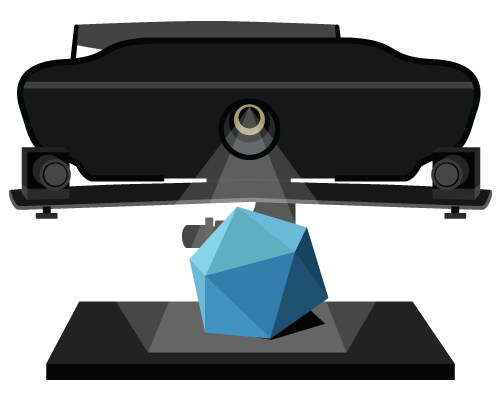
3D Scanners
Professional grade 3D scanners are integrating the best features of consumer grade 3D scanners into the systems.
Consumer-grade 3D scanners have been known for their ease of use compared to professional systems. However, most of the time the scan data quality is not good enough to be useful for industry applications.
Taking into account the benefits of what consumer-grade 3D scanners have to offer, many professional 3D scanning manufacturers are creating a new breed of professional 3D scanning systems that integrates the benefits of consumer-grade and professional systems into one.
These professional 3D scanners are combining the ease of use of the consumer-grade scanners but yield stunning quality scanning results of a professional system–capable of capturing high resolution 3D scans with millions of data points, with some even reaching sub-thousandth of an inch accuracy.
These new systems are:
- Smaller and more portable
- Plug and play solutions so they are ready for scanning
- Yielding high resolution and accurate quality scans
- Easy to use, making them easier to operate by anyone
Small, Compact, and Ready to Go

Professional 3D scanners are trending towards plug and play systems, ready to use right out of the box within minutes of setup.
There’s no need to calibrate the scanners or the use of photogrammetry stickers since they use geometries or features of the object to align and merge the scans together.

Launched earlier this year, the HDI Compact 3D scanners are turnkey systems that are small yet powerful, with a sleek solid aluminum body weighing less than 2 kilograms. It uses blue LED structured-light technology to deliver stunning high-quality 3D scan results at an ultrafast scan speed of a fraction of a second.
All-In-One Solution for a Truly Mobile 3D Scanning Experience
A truly portable 3D scanning system empowers users to take the technology for use anywhere. Typically for a professional 3D scanner, it must be used alongside a computer, laptop, or a tablet with enough processing power to construct the collected 3D scan data into a high resolution digital 3D model with great accuracy.
What’s amazing is that now computers can be embedded inside the 3D scanning unit. It’s an all-in-one solution. There’s no need for a separate computer for data acquisition and post-processing.

Available later this year, the Artec Leo is the first 3D scanner to offer onboard automatic processing—without a computer or tablet. With the most intuitive workflow, it makes 3D scanning as easy as taking a video.
The Artec Leo is a fully self-contained handheld system that streamlines the 3D scanning workflow. It makes it easy to capture and post-process scan data quickly in minutes. This is especially impressive when a single device this small can handle massive amounts of scan data with its own built-in processor. With a built-in battery, you can take it without being restricted by any wires, providing a truly mobile 3D scanning experience.
Here is a look at the Artec Leo in this year’s CES 2018:
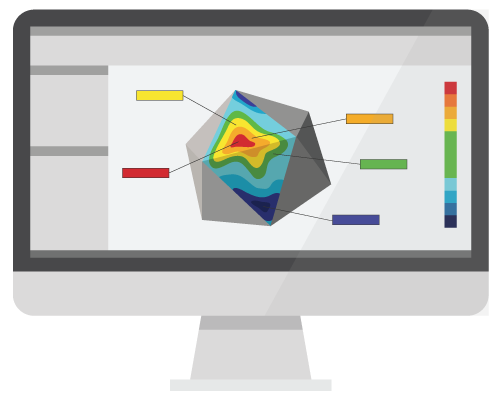
Post-Processing Software
Lower cost solutions for reverse engineering and inspection software are becoming more prevalent and stable in the marketplace.
Reverse engineering and inspection software have relatively been an expensive investment. With good quality professional 3D scanners now being in the $10-$20K+ range as opposed to high-end 3D scanners costing $50-$100K+ purchases about ten years ago, it’s sometimes difficult to justify purchasing complementary post-processing software that cost the same price as the hardware–sometimes even costing more than the 3D scanner itself.
With lower price points, professional 3D scanners are now more accessible to startups as well as small to medium sized companies to adopt their use. They are looking for more affordable end-to-end solution from capturing the 3D scans to using it for downstream applications. Not everyone have the budget to purchase expensive standalone reverse engineering software packages for scan-to-CAD applications. They often don’t need all the bells and whistles of a full reverse engineering and inspection software, they just need a solution that gets the job done.
Purchasing Guideline

Hardware
Price: $$
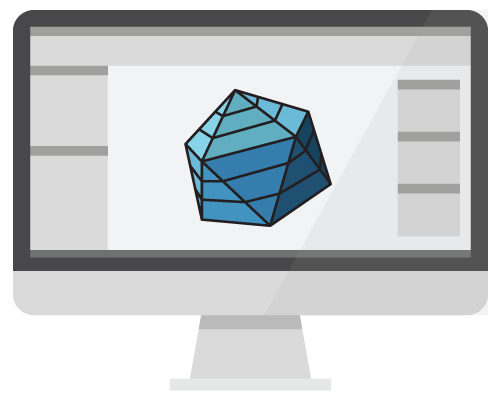
Post-Processing Software
Price: ≤ $
From our experience working with customers, we find that people are most comfortable with purchasing post-processing software that is less than half the cost of the hardware.
Because of this, there is a strong demand for low cost reverse engineering and inspection software. There are solutions out there that cost only a fraction of the price of full reverse engineering and inspection software.
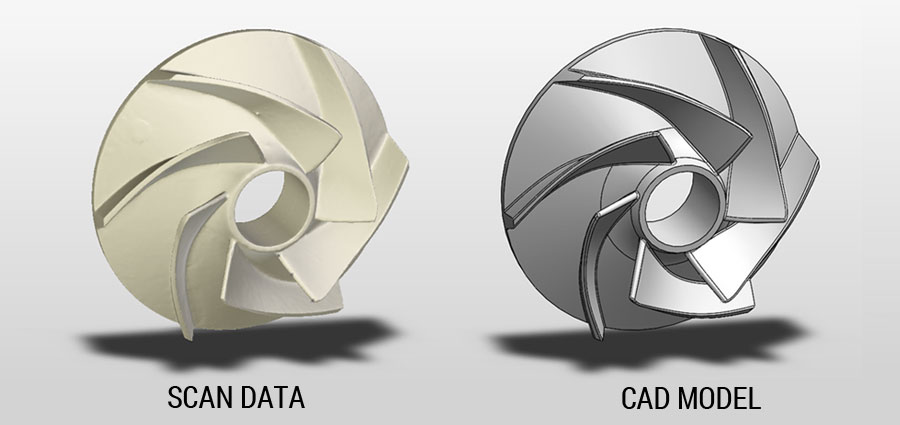
Leveraging SOLIDWORKS as one of the world’s most popular CAD modeling package used by 3.2 million users, XTract3D is a reverse engineering to create parametric CAD models using scan data as a reference (scan-to-CAD). The best part–it’s only about 15%-20% of what you normally pay if you had to purchase a full reverse engineering platform.
Other examples of other low cost post-process software:
- Mesh2Surface for reverse engineering (direct modeling)
- PointShape Inspector for computer-aided inspection
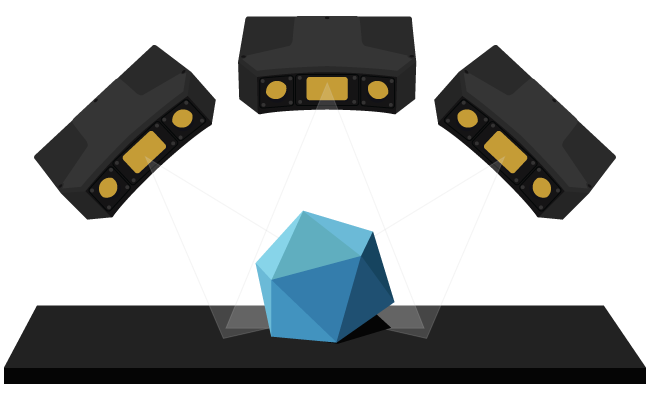
Automated Solutions
Automated scanning systems are coming in at lower price points, making automated solutions more viable for companies to adopt their use.
3D scanning is trending towards less user involvement by automating the workflow instead of doing it manually, which can be a time-consuming task. This can be achieved by configuring an automated system that can take an object from a physical object to a full digital 3D model with a push of a button.
One way is to use multiple capturing units, or scan heads, and set it up as an array using one computer to power them all.

While building a custom solution or using a robotic arm can get quite expensive, there are affordable professional 3D scanners that can be used as off-the-shelf components to create automated 3D scanning systems to bring the cost down.
Previously it would require a computer with massive processing power to set up an array with multiple scan heads. With new technological advancements, it’s now a simple computer setup to create an automated 3D scanner using multiple scan heads.
The HDI Advance 3D scanning system can be setup as an array to automate the 3D scanning process using a simple computer setup.
To take it a step further, it’s not just the 3D scanning process that can be automated. With lower cost inspection software now available as we’ve discussed earlier, this allows more companies to implement a fully automated 3D inspection platform without spending too much investment upfront.
A lower cost option to automate the entire computer-aided inspection workflow is possible using more affordable 3D scanning systems and post-processing software.

3D Scanner
Capture a physical manufactured part into digital form

Computer-Aided Inspection
Compare to manufactured part against CAD model, the golden standard

Inspection Report
Thorough analysis to reduce manufacturing defects
Looking to Purchase Equipment or Software This Year?
The start of the new year is full of great opportunities! Purchasing 3D scanning equipment earlier in the year will get you off to a good start for 2018.

Do you have any questions on how to implement 3D scanning into your operations?
Get a free consultation with our technical specialist.